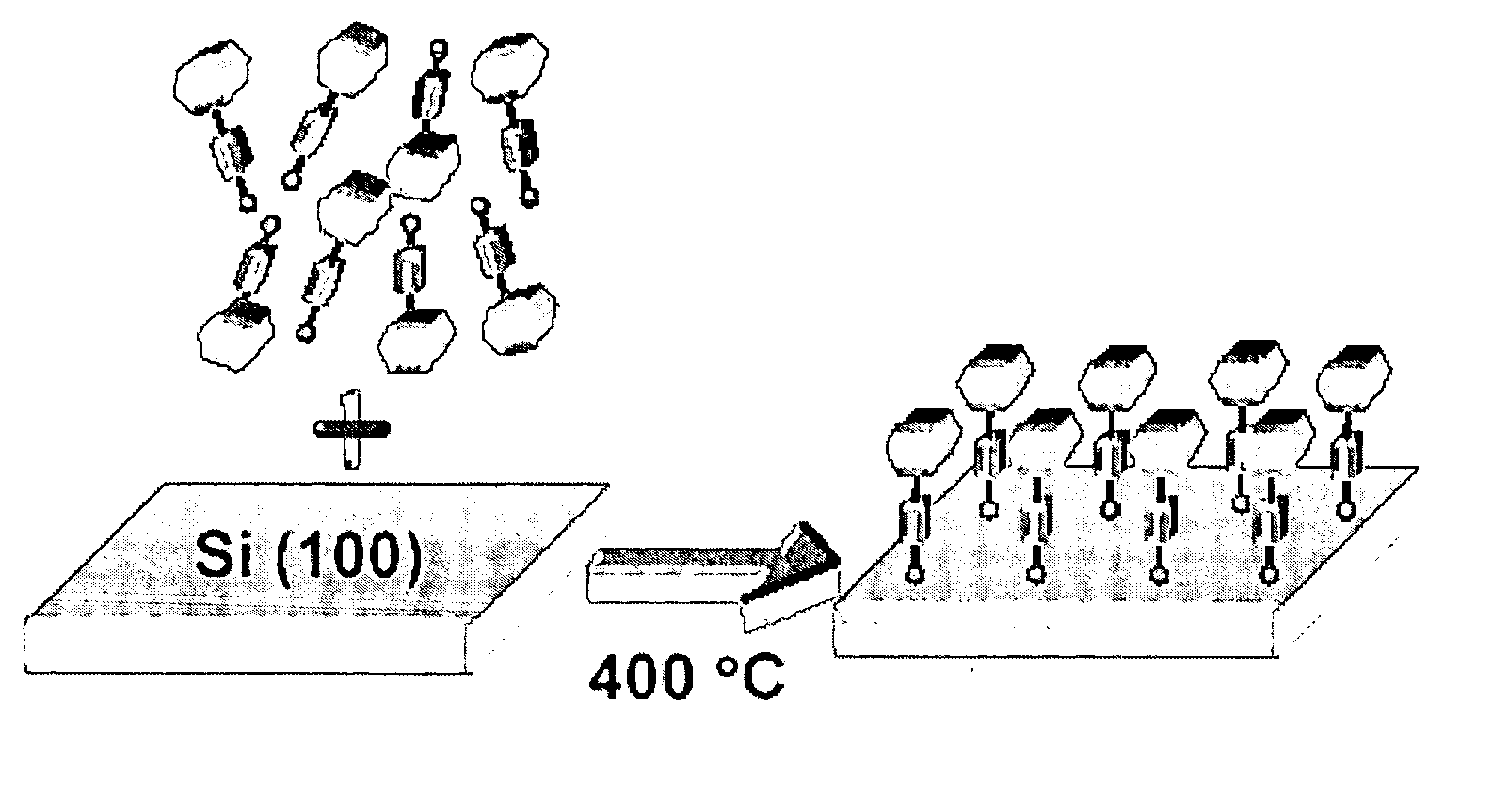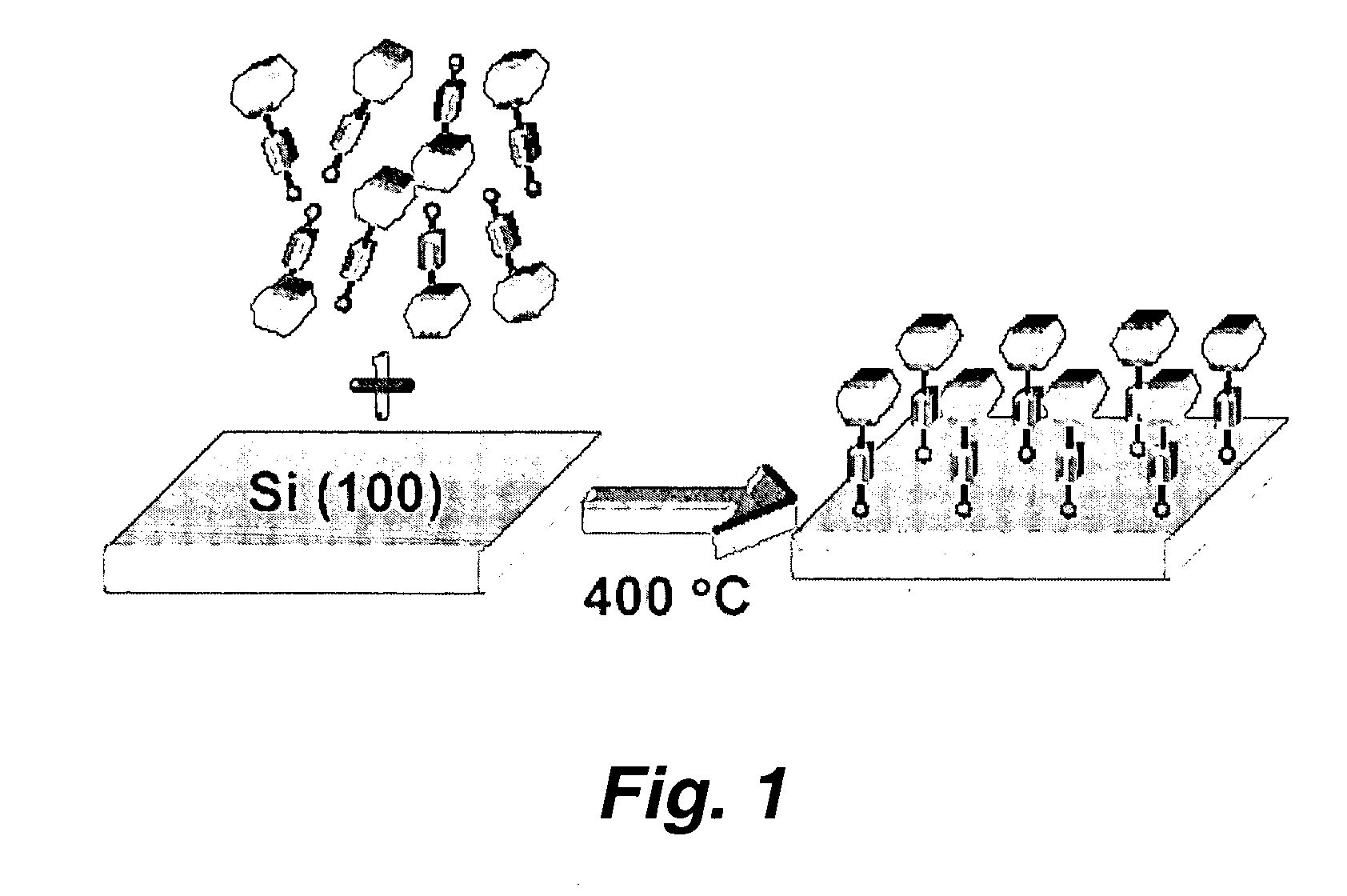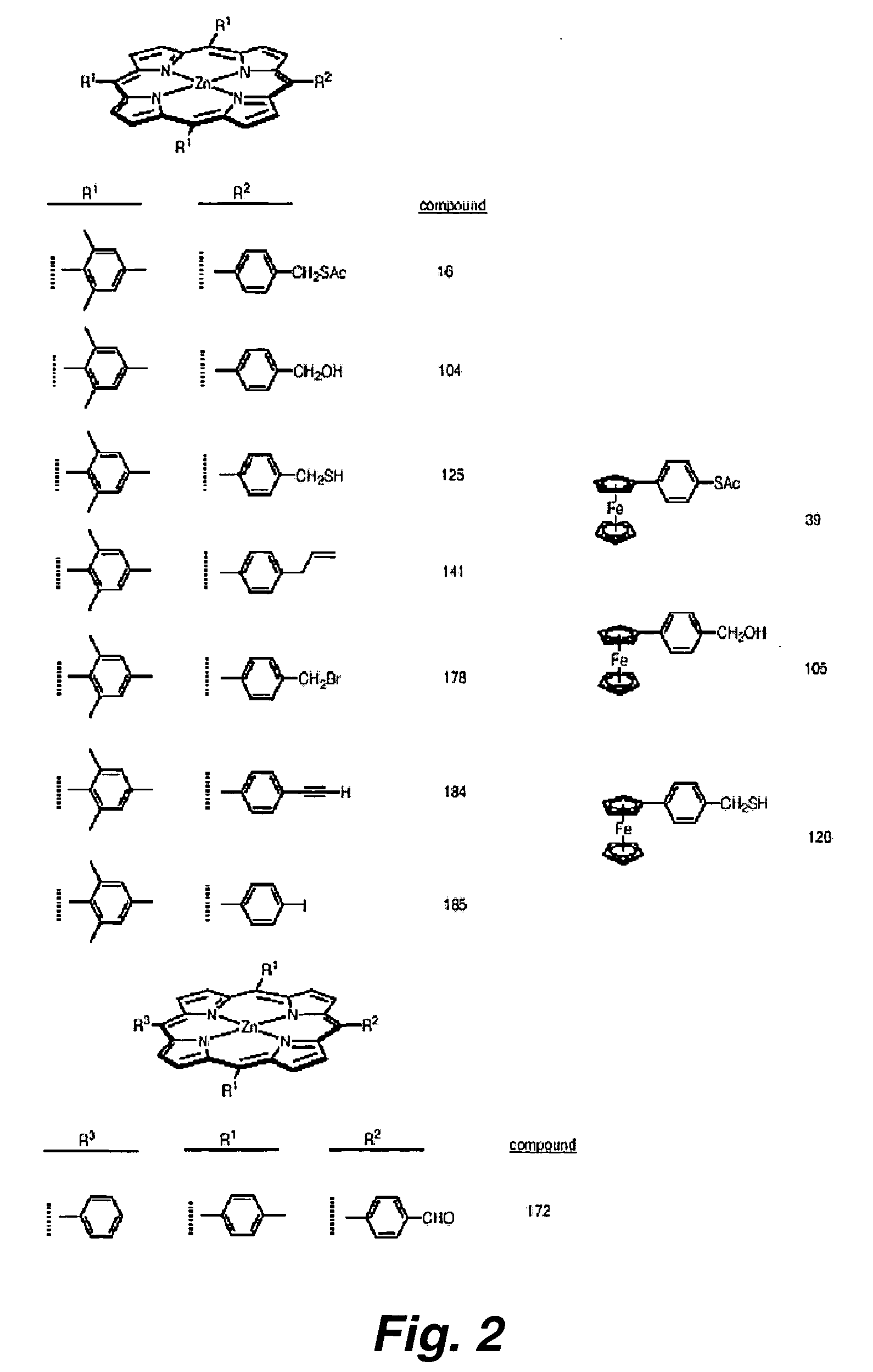High temperature attachment of organic molecules to substrates
a technology of organic molecules and substrates, applied in the field of semiconductor fabrication, can solve the problems of degrading organic molecules and producing fairly toxic materials, and achieve the effect of enhancing the integration of molecular materials and completing in short tim
- Summary
- Abstract
- Description
- Claims
- Application Information
AI Technical Summary
Benefits of technology
Problems solved by technology
Method used
Image
Examples
example 1
Molecules Can Perform in Electronic Devices Under Real-World Processing and Operating Conditions
The central tenet of the field of molecular electronics is that molecular components can be used as functional elements in place of the semiconductor-based devices present in conventional microcircuitry (Kwok and Ellenbogen (2002) Materials Today, 28-37; Carroll and Gorman (2002) Angew. Chem. Int. Ed. 41: 4378-4400). To serve in this role, the molecular components should remain robust under daunting conditions including high-temperature (e.g., 400 ° C.) processing steps during manufacture and very large numbers (109-1012) of operational cycles over a lifetime (International Technology Roadmap for Semiconductors (ITRS), Semiconductor Industry Association, San Jose, Calif. (2000)). There has been considerable skepticism whether molecular materials possess adequate stability to meet such requirements. Herein, we demonstrate that porphyrin-based information storage media meet the processing...
example 2
Solvent Free Attachment
FIG. 7 illustrates an experimental set-up that was used to prove the concept of gas phase molecular attachment. As illustrated in panel (a), we put a drop of molecular solution (redox-active porphyrin in tetrahydrofuran, (THF) solvent) on top of a piece of silicon wafer in a vial. A second piece of silicon wafer was placed next to it. We then sealed the vial and purged it with argon for several minutes to remove / dry THF. This leaves only a molecule powder on the first silicon piece. During the purge, the argon flow was kept low so that no molecule powder would be blown to the other silicon chip. After this step, the vials were heated at various temperatures (300-400 ° C. for 10-20 min). Afterwards the vials were cooled down to room temperature, and the silicon pieces were rinsed with dichloromethane.
A second set-up is illustrated in FIG. 7 (panel b), where no solvent was involved. We sealed the powder comprising the molecule together with a silicon piece in...
example 3
Facile Covalent Attachment of Porphyrins to Semiconductor Surfaces via High Temperature Processes
The field of molecular electronics has been driven by the prospect that devices that rely on the bulk properties of semiconductors will fail to retain the required characteristics to function when feature sizes reach nanoscale dimensions. As a consequence, there has been much interest in developing molecular-based electronic materials for use in both memory architectures and circuit elements (see, e.g., Kwok et al. Materials Today (February 2002), 28-37; Carroll and Gorman (2002) Angew. Chem. Int. Ed., 41: 4378-4400). Towards this goal, we have been engaged in a program aimed at constructing devices that use the properties of molecules to store information (Roth et al. (2000) Vac. Sci. Technol. B 18: 2359-2364; Roth et al. (2003) ACS Symp. Series, 844: 51-61; Roth et al. (2003) Am. Chem. Soc., 125: 505-517; Li et al. (2002) Appl Phys. Lett., 81: 1494-1496; Li et al. (2003) Appl. Phys. ...
PUM
| Property | Measurement | Unit |
|---|---|---|
| temperature | aaaaa | aaaaa |
| temperature | aaaaa | aaaaa |
| temperature | aaaaa | aaaaa |
Abstract
Description
Claims
Application Information
 Login to View More
Login to View More - R&D
- Intellectual Property
- Life Sciences
- Materials
- Tech Scout
- Unparalleled Data Quality
- Higher Quality Content
- 60% Fewer Hallucinations
Browse by: Latest US Patents, China's latest patents, Technical Efficacy Thesaurus, Application Domain, Technology Topic, Popular Technical Reports.
© 2025 PatSnap. All rights reserved.Legal|Privacy policy|Modern Slavery Act Transparency Statement|Sitemap|About US| Contact US: help@patsnap.com



